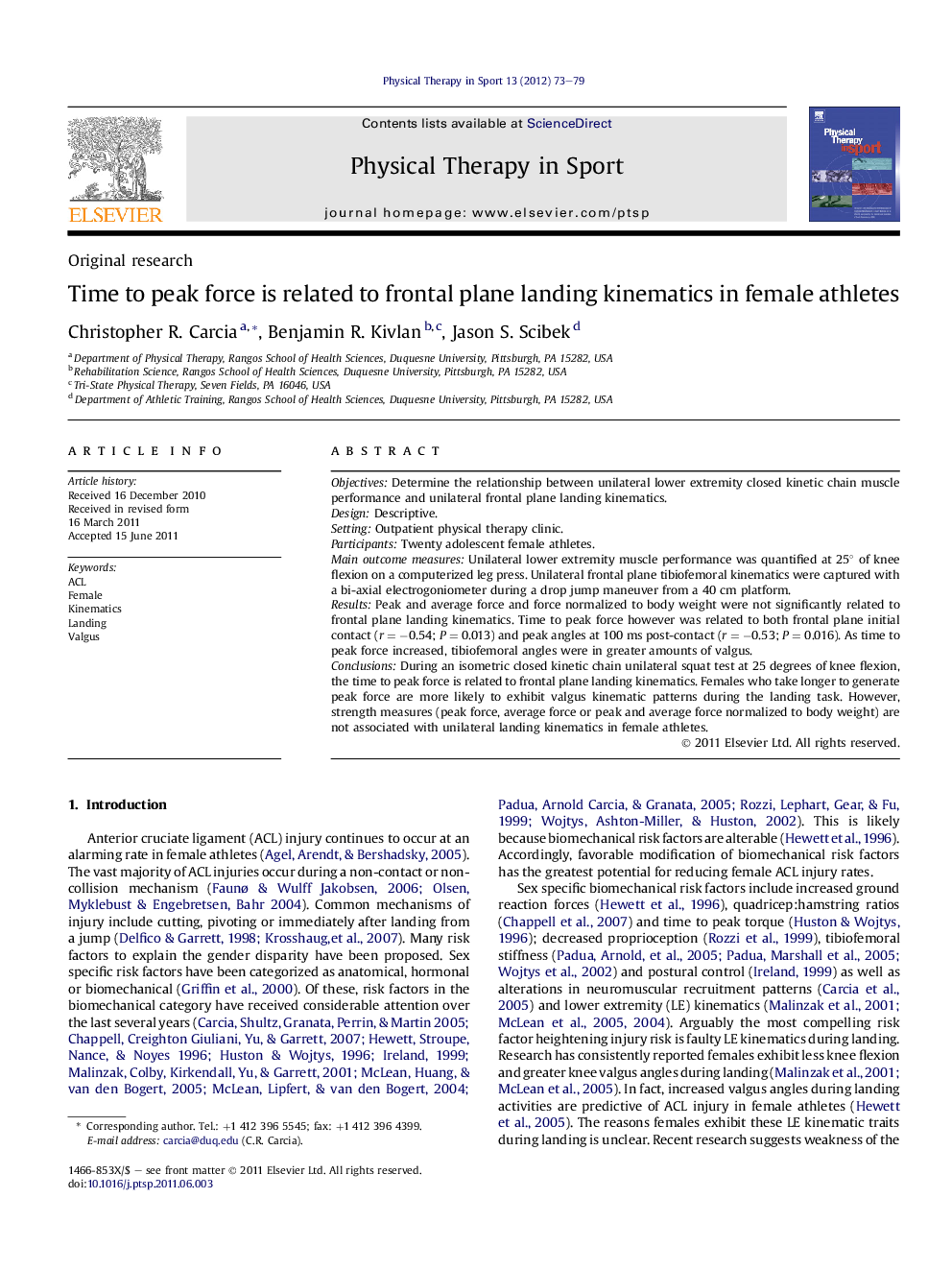| Article ID | Journal | Published Year | Pages | File Type |
|---|---|---|---|---|
| 2704276 | Physical Therapy in Sport | 2012 | 7 Pages |
ObjectivesDetermine the relationship between unilateral lower extremity closed kinetic chain muscle performance and unilateral frontal plane landing kinematics.DesignDescriptive.SettingOutpatient physical therapy clinic.ParticipantsTwenty adolescent female athletes.Main outcome measuresUnilateral lower extremity muscle performance was quantified at 25° of knee flexion on a computerized leg press. Unilateral frontal plane tibiofemoral kinematics were captured with a bi-axial electrogoniometer during a drop jump maneuver from a 40 cm platform.ResultsPeak and average force and force normalized to body weight were not significantly related to frontal plane landing kinematics. Time to peak force however was related to both frontal plane initial contact (r = −0.54; P = 0.013) and peak angles at 100 ms post-contact (r = −0.53; P = 0.016). As time to peak force increased, tibiofemoral angles were in greater amounts of valgus.ConclusionsDuring an isometric closed kinetic chain unilateral squat test at 25 degrees of knee flexion, the time to peak force is related to frontal plane landing kinematics. Females who take longer to generate peak force are more likely to exhibit valgus kinematic patterns during the landing task. However, strength measures (peak force, average force or peak and average force normalized to body weight) are not associated with unilateral landing kinematics in female athletes.
